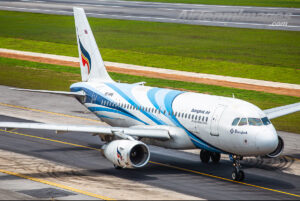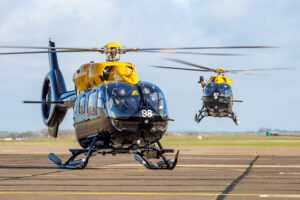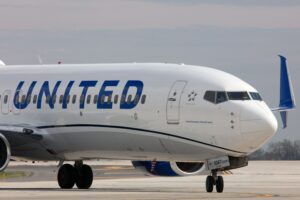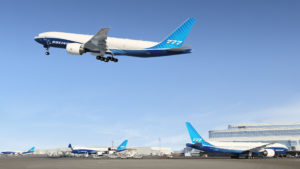Clyde Buntrock Chief Executive Officer at AJW Aviation speaks to the AviTrader editor about the current status of the MRO and aftermarket and how the economic climate might influence the industry going forward.
OEMs are set to increase production rates of new aircraft especially narrowbodies in response to meeting demands for years’ long backlogs. Clyde Buntrock, CEO at A JW says this has led to uncertainty about whether vendors will be able to maintain the component supply chain to the OEMs. “While the shortage of raw materials is a factor, another concern is the lack of skilled personnel on the production lines, and this is placing businesses under immense pressure to produce enough products to service an increasing number of aircraft,” he highlights.
In a narrowbody aircraft webinar in November, experts at aviation consultancy firm IBA outlined that global capacity recovery towards 2019 has slowed in the second half of 2022 but is continuing into 2023 and the Airbus A320neo family and Boeing 737 MAX will be the most predominant narrowbody aircraft by 2032.
With airlines retiring some older widebodies in favour of newer narrowbodies, Buntrock feels this will ultimately impact the MRO and aftermarket sectors. “The newer generation narrowbody aircraft are predominantly electronic systems and have fewer parts, but while this means they have lower margins and are more reliable, which is of benefit to the airline, it could affect the MRO and aftermarket services somewhat.” This said, Buntrock sees an increase in aftermarket sales in the aviation industry and stresses that there are still maintenance schedules to be maintained for existing fleets, so it is business as usual for companies like AJW who offer MRO services.
“The newer generation
narrowbody aircraft are
predominantly electronic
systems and have fewer parts,
but while this means they have
lower margins and are more
reliable, which is of benefit to
the airline, it could affect the
MRO and aftermarket services
somewhat.
Clyde Buntrock, AJW Aviation“
It is worth noting that several airlines are still not at pre-Covid flying capacity and still have aircraft on the ground, however there is optimism in the industry as tourism makes a steady recovery. “As passenger numbers continue to increase over the coming months, airlines will have to mobilise their grounded aircraft and see to maintenance to meet the needs of their global and local travellers. Stakeholders in the MRO and aftermarket sector, such as AJW Group, are ready for this upturn in business and remain positive about business growth going forward,” he states. Industry experts are suggesting the strength of the U.S dollar will create additional cost challenges for global aviation, for instance, engine and component cost per flight hour agreements sold in $USD will equate to higher maintenance costs.

Buntrock acknowledges that the strength of US dollar is putting pressure on airlines by driving up the cost of
everything from fuel to components, and aircraft themselves. He explains: “The knock-on effect of the strengthening dollar is that it has sent previously strong currencies such as the British pound and the Chinese yen plummeting recently. The pound has also been affected by the looming energy and economic crisis as well as ongoing geopolitical unrest in the region.”
International airlines recovering from the pandemic continue to face financial challenges as they raise revenue in local currencies but mostly pay for jet fuel, and maintenance and overhaul costs in dollars. Buntrock suggests these costs amount to approximately 40% of airlines’ outgoing costs – “they only have one solution, and that is to pass these costs onto their passengers by increasing already high, ticket prices.”
According to observations from A JW, ticket prices are currently 42% higher than they were pre-pandemic, which shows a staggering increase in cost for passengers. Buntrock says with airlines recovering from an approximately $190bn net loss in revenue over the past three years, they must do something to get back on track.
The good news is that airline ticket prices are expected to lower in 2023 compared to 2022 suggest experts IBA
mainly as a consequence of an increase in industry capacity. IBA believes demand might be surprisingly resilient because of continued of pent-up demand, lower ticket prices and the fact that lower fuel prices will lower the break-even point for marginal routes.
All considered, Buntrock believes the travel industry has seen a definite upturn in bookings globally, which is positive as it is increasing airline revenues. “While there is an increase in revenue and businesses are doing well, capital costs have also soared, which is placing pressure on all in the industry. The strong dollar has pushed up the price of new aircraft and raw materials and rising inflation rates and exchange rates are not helping the already struggling industry,” he says.

Aircraft purchase deals made before the pandemic, may have been pushed back due to lack of revenue, but the deals were signed, escalation clauses will have kicked in and the aircraft are currently more expensive than initially expected, Buntrock notes. He says airlines now need to deal with balancing flying schedules and pricing amidst reduced passenger confidence in the industry as it is. Cost per flight contracts signed a few years ago, will also have been escalated, again affecting countries who are balancing their revenue and expenditure currencies.
As Buntrock observes, things look good for global companies who are making sales in dollars as their capital expenditure is paid in dollars as well, and this bodes well for their investors. “Companies that receive payment in local currency but have capital expenditure expenses in dollars are the ones who will struggle in the current economic climate.”























